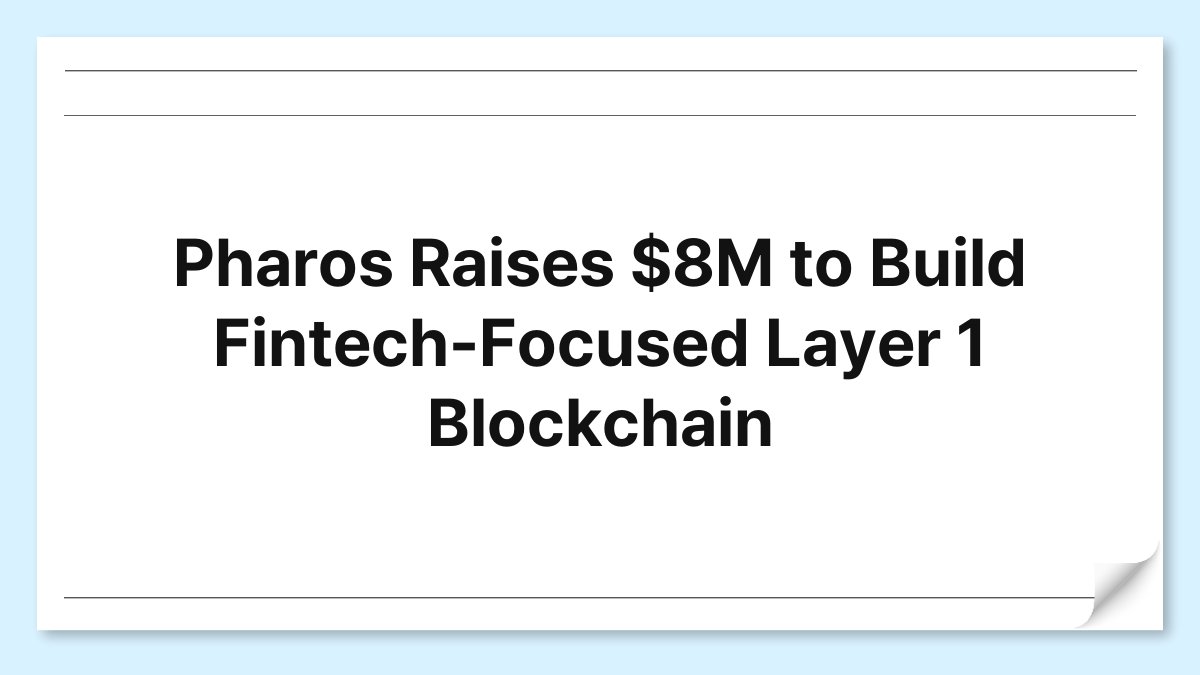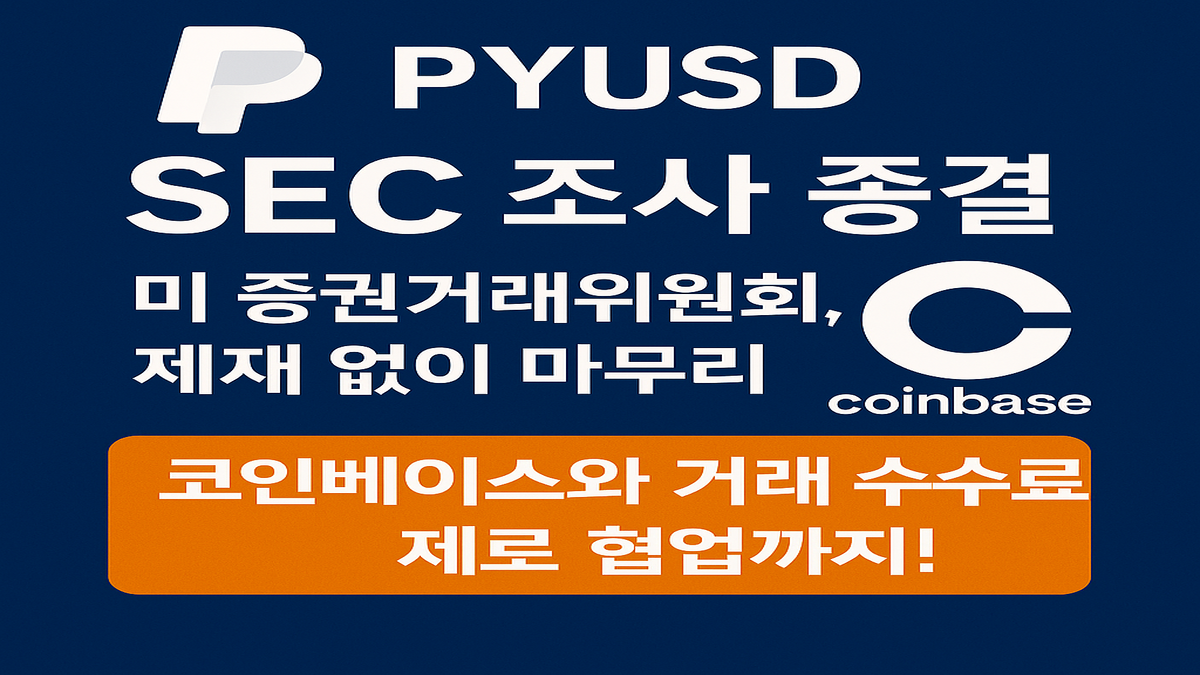[K-Bridge/Jay Son] Pharos, a rising player in the blockchain industry, has successfully raised $8 million to develop a fintech-focused Layer 1 blockchain.
This initiative aims to address the growing demand for innovative financial solutions that leverage blockchain technology.
With this funding, Pharos intends to create a robust platform that enhances transaction efficiency, security, and accessibility.
The project is a significant step towards revolutionizing the financial landscape by integrating decentralized finance (DeFi) principles into mainstream financial systems.
By reading this article, you will gain insights into the implications of this funding, the technology behind Layer 1 blockchains, and the potential impact on the fintech sector.
Understanding Layer 1 Blockchains
Definition and Importance of Layer 1 Blockchains
Layer 1 blockchains are the foundational layer of blockchain architecture, providing the core functionality and protocols necessary for a decentralized network.
These blockchains operate independently and are responsible for processing transactions, maintaining security, and ensuring consensus among network participants.
The significance of Layer 1 blockchains lies in their ability to offer scalability, security, and decentralization, which are critical for the widespread adoption of blockchain technology.
They serve as the backbone for various applications, ranging from cryptocurrencies to decentralized applications (dApps), making them essential for the future of digital finance.
How Layer 1 Blockchains Function
Layer 1 blockchains function through a decentralized network of nodes that validate transactions and maintain the integrity of the blockchain.
Each transaction is grouped into blocks, which are then added to the blockchain in a linear and chronological order.
The consensus mechanism, such as Proof of Work or Proof of Stake, ensures that all nodes agree on the current state of the blockchain, preventing double-spending and fraud.
This decentralized approach not only enhances security but also fosters trust among users, as no single entity controls the network.
The efficiency of Layer 1 blockchains is crucial for supporting high transaction volumes, which is particularly important for fintech applications.
Examples of Layer 1 Blockchains
Several prominent Layer 1 blockchains have gained recognition for their unique features and capabilities.
Bitcoin, the first and most well-known cryptocurrency, operates as a Layer 1 blockchain focused on secure peer-to-peer transactions.
Ethereum, on the other hand, introduced smart contracts, enabling developers to create decentralized applications on its platform.
Other examples include Binance Smart Chain, which offers lower transaction fees and faster confirmation times, and Solana, known for its high throughput and scalability.
Each of these blockchains showcases the diverse applications and potential of Layer 1 technologies in the evolving digital finance landscape.
The Role of Fintech in Blockchain Development
The Intersection of Fintech and Blockchain Technology
The fusion of fintech and blockchain technology has the potential to transform traditional financial services.
Fintech companies leverage technology to improve and automate financial services, while blockchain introduces transparency, security, and decentralization.
This intersection enables innovative solutions such as peer-to-peer lending, decentralized exchanges, and digital wallets, which challenge conventional banking models.
As fintech continues to evolve, the integration of blockchain technology is becoming increasingly essential for enhancing user experience and operational efficiency.
Benefits of Blockchain in Fintech
Incorporating blockchain technology into fintech offers several advantages.
Firstly, it enhances transaction security by eliminating the need for intermediaries, reducing the risk of fraud and data breaches.
Secondly, blockchain facilitates faster transaction processing, enabling real-time settlements that are crucial for modern financial operations.
Thirdly, the transparency of blockchain networks fosters trust among users, as all transactions are publicly recorded and verifiable.
These benefits position blockchain as a vital component for fintech companies aiming to innovate and stay competitive in the rapidly changing financial landscape.
Challenges Facing Fintech and Blockchain Integration
Despite the promising benefits, integrating blockchain technology into fintech is not without challenges.
Regulatory uncertainties pose significant hurdles, as governments and financial authorities grapple with how to oversee blockchain-based financial services.
Additionally, scalability remains a concern, as many existing blockchains struggle to handle high transaction volumes without compromising speed and efficiency.
Furthermore, the lack of user awareness and understanding of blockchain technology can hinder adoption.
Addressing these challenges will be crucial for the successful implementation of blockchain in the fintech sector.
Pharos’ Vision for Fintech-Focused Blockchain
Goals of Pharos in Blockchain Development
Pharos aims to create a Layer 1 blockchain specifically designed for the fintech sector, focusing on enhancing transaction efficiency and security.
The company’s vision includes developing a platform that caters to the unique needs of financial institutions, enabling them to leverage blockchain technology for various applications.
By prioritizing user experience and operational efficiency, Pharos intends to bridge the gap between traditional finance and the emerging decentralized finance landscape.
This ambitious goal reflects the company’s commitment to driving innovation in the financial industry.
Key Features of Pharos’ Blockchain
The blockchain developed by Pharos will incorporate several key features to address the needs of fintech companies.
Scalability is a primary focus, ensuring that the platform can handle a high volume of transactions without compromising performance.
Additionally, the blockchain will offer robust security measures, including advanced encryption techniques and decentralized consensus mechanisms, to protect user data and prevent fraud.
Furthermore, Pharos plans to implement user-friendly interfaces and tools, making it easier for financial institutions to integrate and utilize the blockchain effectively.
Expected Impact on the Financial Sector
The introduction of Pharos’ fintech-focused Layer 1 blockchain is expected to have a significant impact on the financial sector.
By providing a secure and efficient platform for financial transactions, Pharos aims to enhance the overall user experience and streamline operations for financial institutions.
This innovation could lead to reduced transaction costs, faster processing times, and increased accessibility for users.
Ultimately, Pharos envisions its blockchain as a catalyst for transforming traditional financial systems, paving the way for a more decentralized and inclusive financial ecosystem.
Funding and Investment Landscape
Overview of Pharos’ Funding Round
Pharos’ recent funding round, which raised $8 million, reflects growing investor interest in blockchain technology and its applications in fintech.
This funding will be instrumental in accelerating the development of Pharos’ Layer 1 blockchain, allowing the company to expand its team, enhance technology, and establish partnerships within the financial sector.
The successful funding round signifies confidence in Pharos’ vision and the potential of its blockchain solution to address the challenges faced by traditional financial systems.
Investor Sentiment in Blockchain Technology
Investor sentiment towards blockchain technology has been increasingly positive, driven by the growing recognition of its transformative potential.
As more financial institutions explore blockchain solutions, venture capital firms are actively seeking opportunities to invest in innovative startups like Pharos.
This trend is indicative of a broader shift in the financial landscape, where blockchain is being viewed as a viable alternative to traditional financial systems.
The influx of investment not only supports the development of new technologies but also fosters competition and innovation within the industry.
Future Funding Prospects for Pharos
With the successful completion of its initial funding round, Pharos is well-positioned to attract further investment in the future.
As the company progresses in its development and demonstrates the capabilities of its fintech-focused blockchain, it is likely to garner interest from additional investors looking to capitalize on the growing demand for blockchain solutions.
Strategic partnerships with established financial institutions could also provide opportunities for collaboration and additional funding, further solidifying Pharos’ position in the market.
Challenges in Blockchain Development
Technical Challenges in Building a Layer 1 Blockchain
Developing a Layer 1 blockchain presents various technical challenges that Pharos must navigate.
Ensuring scalability while maintaining security and decentralization is a complex balancing act.
The team must design a consensus mechanism that can efficiently process transactions without compromising the integrity of the network.
Additionally, integrating advanced features such as smart contracts and interoperability with existing financial systems requires careful planning and execution.
Overcoming these technical hurdles will be crucial for the successful launch and adoption of Pharos’ blockchain.
Regulatory Hurdles Facing Blockchain Projects
Regulatory uncertainty is a significant challenge for blockchain projects, including Pharos.
Governments around the world are still determining how to regulate blockchain technology and its applications in finance.
This uncertainty can create obstacles for companies seeking to operate within legal frameworks while innovating.
Pharos must proactively engage with regulators to ensure compliance and advocate for policies that support blockchain development.
Navigating the regulatory landscape will be essential for establishing trust with users and financial institutions.
Market Competition and Differentiation
The blockchain space is highly competitive, with numerous projects vying for attention and investment.
Pharos faces the challenge of differentiating its fintech-focused Layer 1 blockchain from existing solutions.
To succeed, the company must clearly articulate its unique value proposition and demonstrate how its technology addresses specific pain points in the financial sector.
Building a strong brand identity and establishing partnerships with key players in the industry will be vital for gaining traction and market share.
Future Prospects of Pharos’ Blockchain
Roadmap for Development and Launch
Pharos has outlined a comprehensive roadmap for the development and launch of its fintech-focused Layer 1 blockchain.
The initial phase will involve refining the technology, conducting thorough testing, and gathering feedback from potential users.
Following this, Pharos plans to implement a phased rollout, allowing for gradual adoption and integration into existing financial systems.
The roadmap also includes plans for continuous improvement and updates based on user feedback and market trends, ensuring the blockchain remains relevant and competitive.
Potential Partnerships and Collaborations
Strategic partnerships will play a crucial role in Pharos’ success.
Collaborating with established financial institutions, fintech companies, and technology providers can enhance the platform’s credibility and accelerate adoption.
These partnerships can facilitate knowledge sharing, access to resources, and integration opportunities, ultimately benefiting both Pharos and its partners.
As the company progresses, identifying and pursuing strategic alliances will be essential for expanding its reach and influence in the financial sector.
Long-Term Vision for the Financial Ecosystem
Pharos envisions a future where its fintech-focused Layer 1 blockchain serves as a cornerstone of a more inclusive and efficient financial ecosystem.
By enabling secure and transparent transactions, Pharos aims to empower individuals and businesses to participate in the global economy.
The long-term vision includes fostering innovation in financial services, driving down costs, and increasing accessibility for underserved populations.
Ultimately, Pharos seeks to contribute to the evolution of finance, making it more equitable and accessible for all.
Conclusion
Pharos’ successful $8 million funding round marks a significant milestone in its journey to develop a fintech-focused Layer 1 blockchain.
This initiative has the potential to revolutionize the financial landscape by enhancing transaction efficiency and security.
As Pharos navigates the complexities of blockchain development, regulatory challenges, and market competition, its commitment to innovation and user experience will be crucial for success.
The future of Pharos’ blockchain is promising, with opportunities for strategic partnerships and a long-term vision that aims to reshape the financial ecosystem.
The ongoing evolution of blockchain technology in fintech is an exciting development that will continue to unfold in the coming years.







